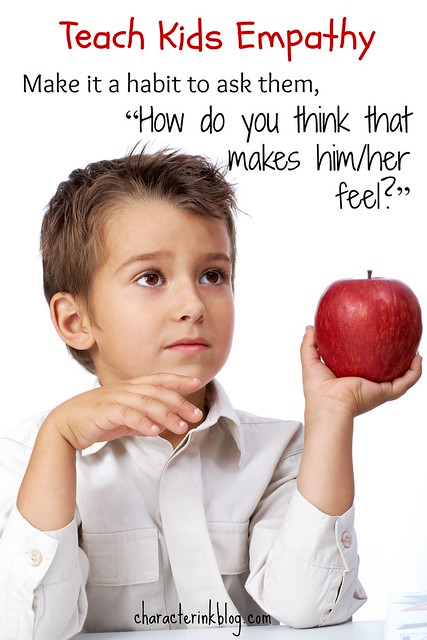How many times have we heard “It isn’t my fault”?
Or “He did it first”?
Or “I only did that because he did this to me…”?
While some of that will always be a part of raising more than one child in a home, as parents our focus should be on getting the whole “never my fault” mentality out of our children by the time they are grown. And replace it with responsibility for actions, empathy towards those they might hurt, and humility in admitting guilt.
Yesterday I discussed the lack of humility and true apology in the co-hosts of The View when they attempted to undo the damage that was done by essentially making fun of nurses by belittling the beauty pageant’s nursing talent. (Read that here.)
Tomorrow I am going to give you our 3 Steps to Teach Your Kids How to Apologize.
Today I want to give you two strategies that we used to help our children learn humility and empathy (two important qualities and pre-requisites to the genuine apology).
My husband was big on both of these and used them extensively in heart-training our kids, especially as they reached the preteen and teen years. However, he was also big on something else—teaching during non-conflict times.
So I want to preface these two tips with this instruction: Whenever possible, try to teach your kids important relationship skills during non-conflict times.
That is, do not wait until there is a fight in progress to try to begin asking them “what the other person might be feeling.” (If you’ve used this strategy during non-conflict times, you can definitely use it in mid-fight, but teach it when there isn’t a conflict!)
We tried to make these two strategies a way of life. That is, we used them to discuss other people’s problems (their friends with their parents or two other friends or a sibling pair of friends, etc.). We applied them to situations all the time—movies, friends, news headlines, etc. (That is one reason that our twenty year old knew immediately that the ladies in The View were not genuinely apologizing when he saw the clip on Facebook.)
So…the strategies and how to carry them out:
(1) Empathy strategy: How do you think that makes him/her feel?
We used this ALL THE TIME from the time our children were very small.
We taught them to look at people’s faces and discern what that person might be thinking or feeling. We taught them to always “put themselves in other people’s shoes.” We taught them to try to understand how their siblings were feeling.
For the latter, we might do something as simple as bring the kids together when a sibling is on the way home from a second driving test/driver’s license failure and dialogue with them: “______ (no mention of names to protect the three of my seven kids who had this problem! 🙂 ) didn’t pass the driver’s test again today. How do you think he is feeling? What can we do to help him feel better right now?”
Or we might do something as elaborate as sitting down with two teens who are at an impasse in a conflict for two or three hours…constantly reminding them to stop and think for a moment how the other person feels right now.
When we do this on a regular basis, an empathy is developed that might otherwise be missed.
And empathy is truly one of the foundations to the genuine apology.
If the person at fault doesn’t feel anything for the other person’s hurt, the genuine apology simply cannot move forward.
(1) Humility strategy: I want you to tell me your side of the story by only telling me your wrongs/faults. Do not mention what the other person did.
We used this especially with pre-teens and teens. When kids come to you to tell you what the other person did, it (obviously) becomes distorted.
The Bible even addresses this when it says something like “each person sounds innocent when they give their side of the story.”
So my husband started turning this around and had each child give his side of the story—but while only telling what HE did wrong (not the other person).
Sometimes this would diffuse it fairly early. As the child gave his side, he could see that he had some part in the problem. He humbled himself, so to speak.
Other times (thus, the two to three hour impasse session referred to above!), it wasn’t so simple.
Regardless, this humility strategy takes the child back to his part in any conflict.




